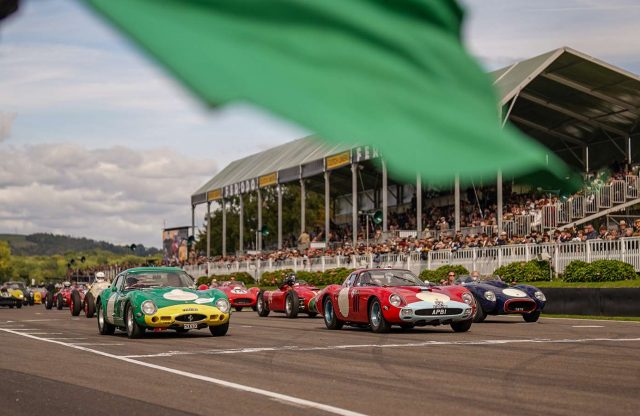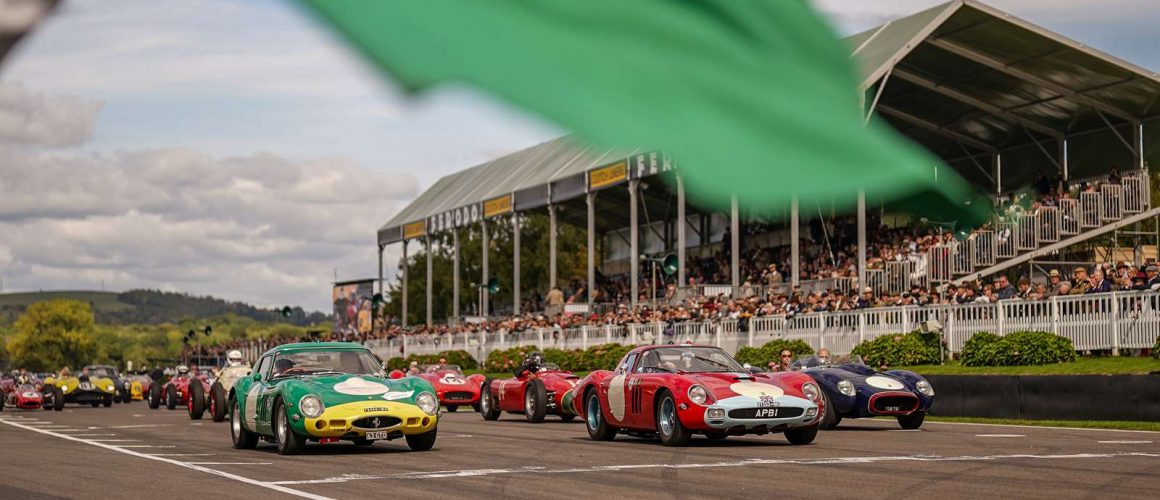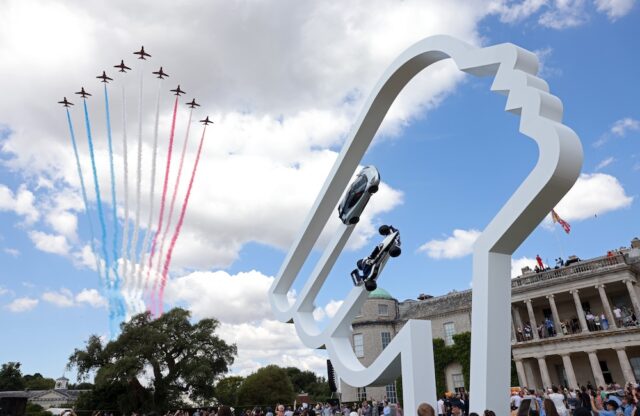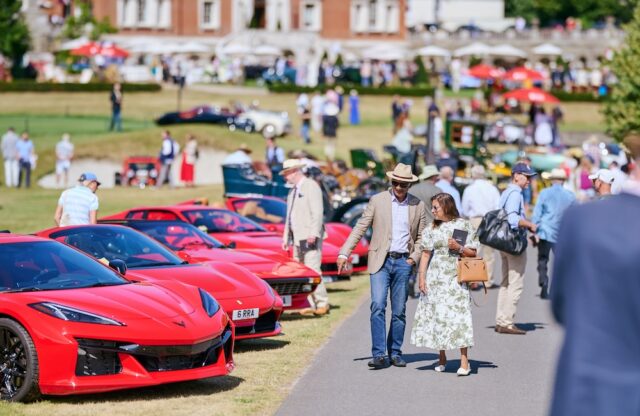WORDS: ELLIOTT HUGHES | PHOTOGRAPHY: GOODWOOD REVIVAL
The 2022 Goodwood Revival signed off this year’s calendar of European classic car events in style, transporting visitors back to motor sport’s glory days for a high-octane weekend of historic racing, sensational track parades and period sartorial elegance. Here are ten of our highlights:
FERRARI 75TH ANNIVERSARY TRACK PARADE
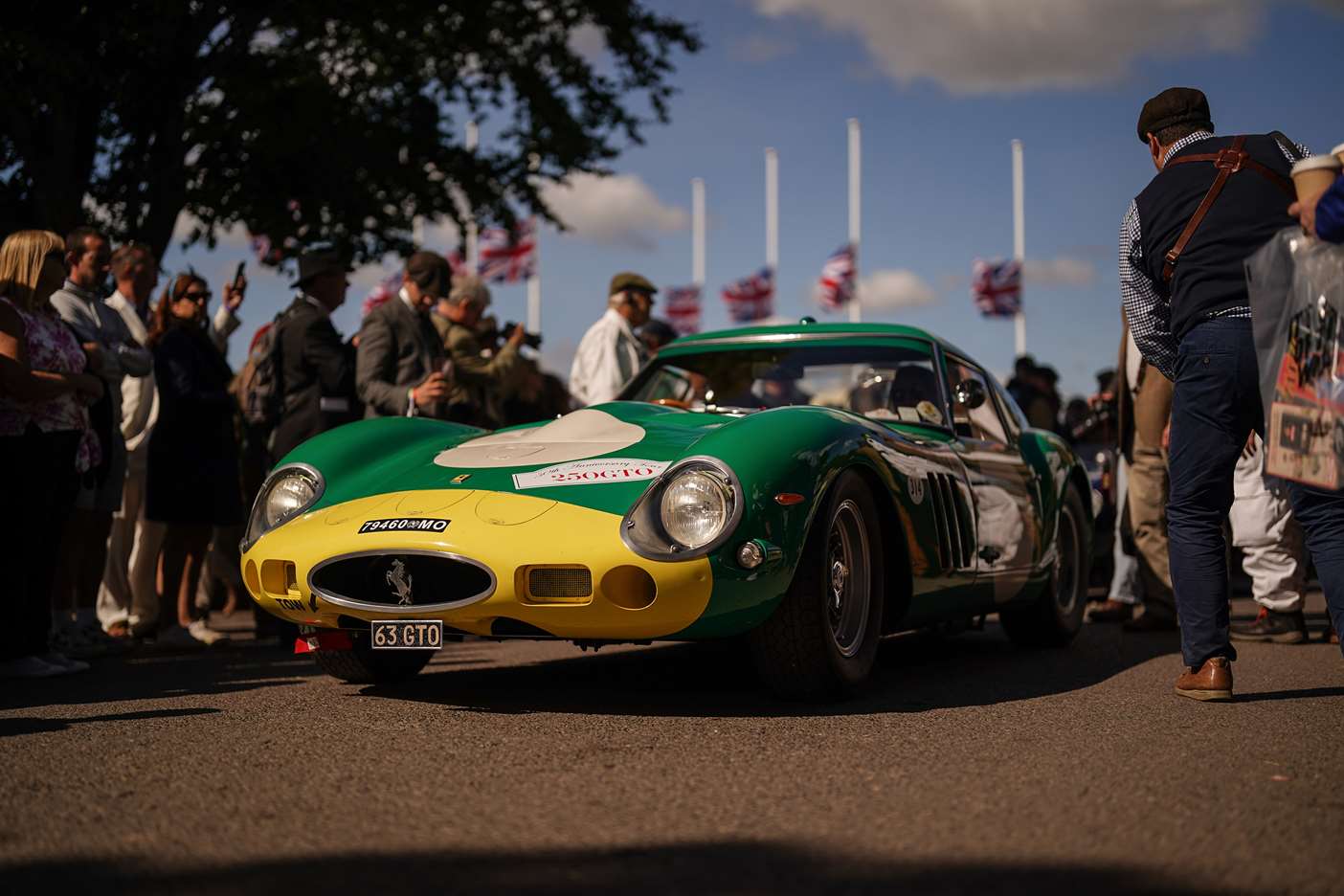
The Goodwood Revival celebrated Ferrari’s 75th anniversary with a showcase of Maranello’s finest Revival-era racing cars. The 75-car line-up contained some of the most special Prancing Horses to ever leave the hallowed gates of Maranello.
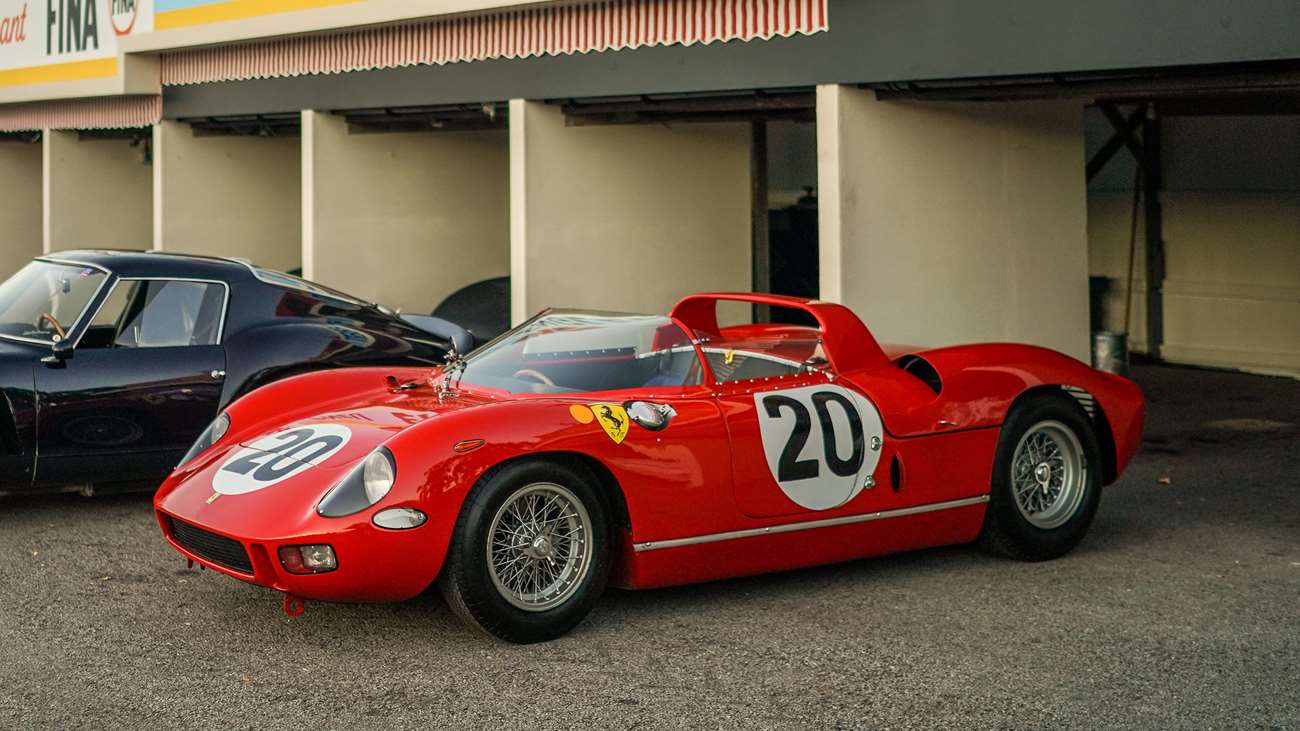
The line-up included two Le Mans winners – the Ferrari 166MM Barchetta that took the marque’s first overall victory at La Sarthe in 1949 and the 275P that won the prestigious race in 1963 and 1964. The latter is one of only five cars in history to win on more than one occasion. There was also a trio of Ferrari 250GTOs, two of which were driven by respective Formula 1 and sports car legends Sir Jackie Stewart and Derek Bell.
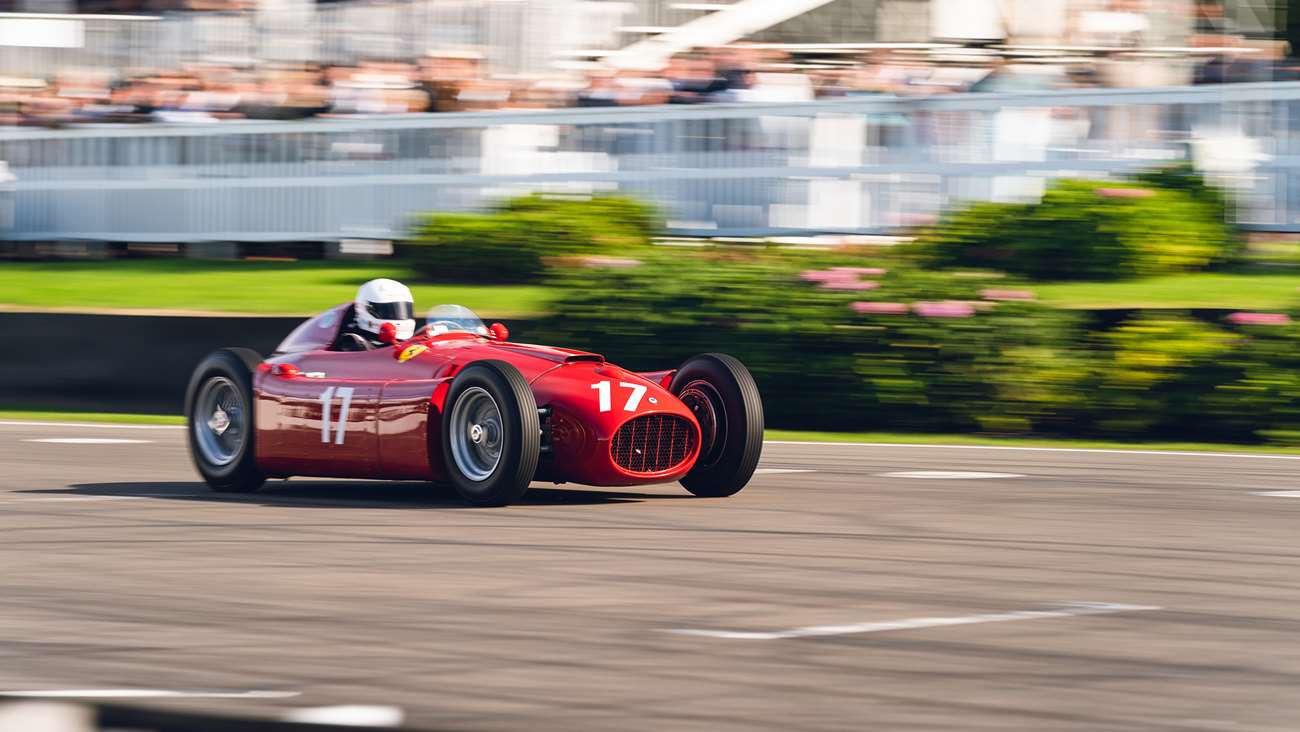
Complementing the three GTOs was a jaw-dropping selection of ten 250GT SWBs, two of which took Sir Stirling Moss to victory in the 1960 and 1961 Goodwood Tourist Trophy races. Also making an appearance was John Surtees’ 1965 1512 F1 car, the Louwman Museum’s 1952 375 Grant Piston Ring Special, a recreation of Phil Hill’s 1961 156 Sharknose F1 car, plus a Lancia-Ferrari D50A, 500 Mondial and a 375MM.
BRM TYPE 15 V16 CONTINUATION RACES IN ANGER
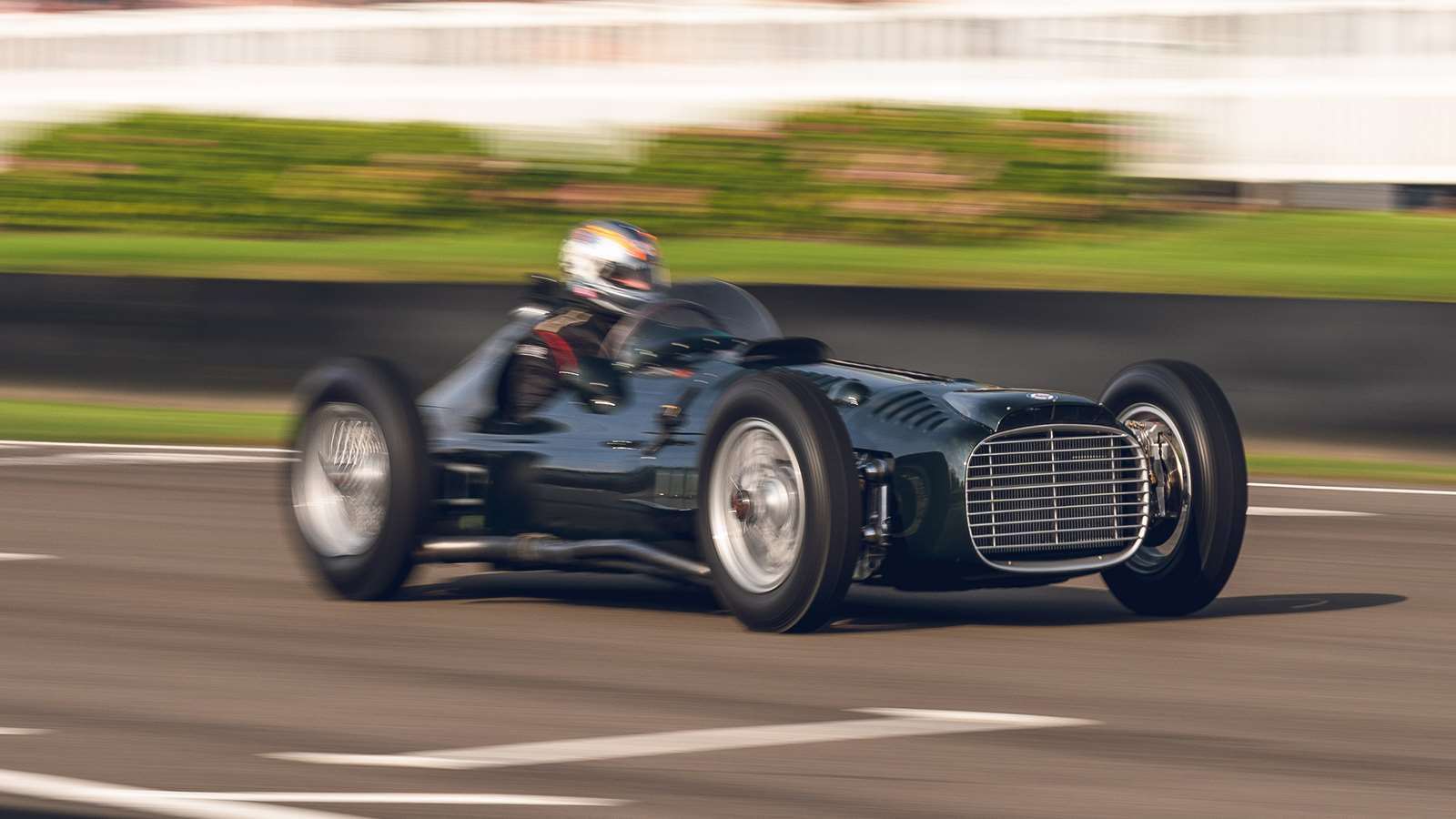
The first of BRM’s V16 Continuation cars made its public debut at last year’s Revival, and many in attendance then yearned to see – and hear – the car driven in anger. Happily, their prayers were answered as the car lined up on the grid for the 2022 Goodwood Trophy for Grand Prix and Voiturette cars raced between 1930 and 1951.
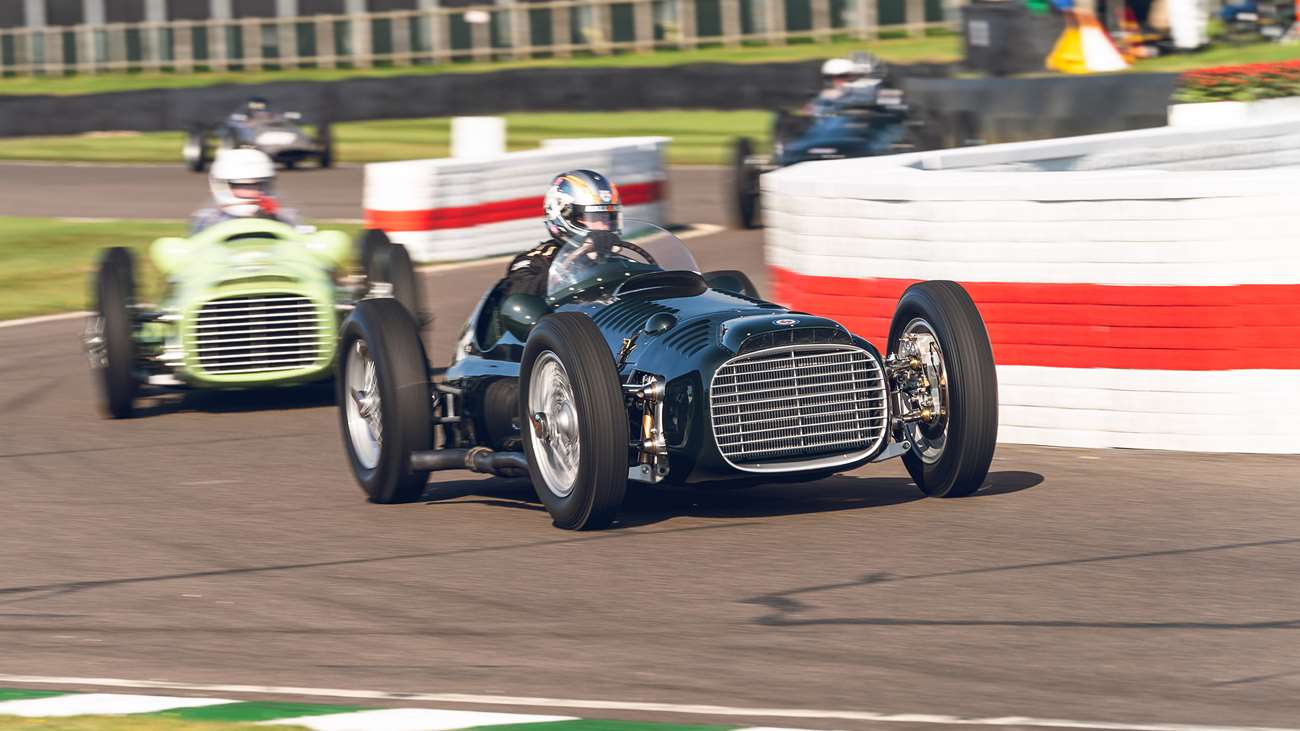
Unfortunately, a fuel-system issue put paid to the banshee wail of the BRM’s 16-cylinder engine, as rising oil temperature forced it into retirement by the end of the tenth lap. The silver lining is that Bourne-based historic motor sport specialist Hall & Hall has vowed that the car will return vying for victory next year – so don’t forget your earplugs.
GRAHAM HILL TRACK PARADE
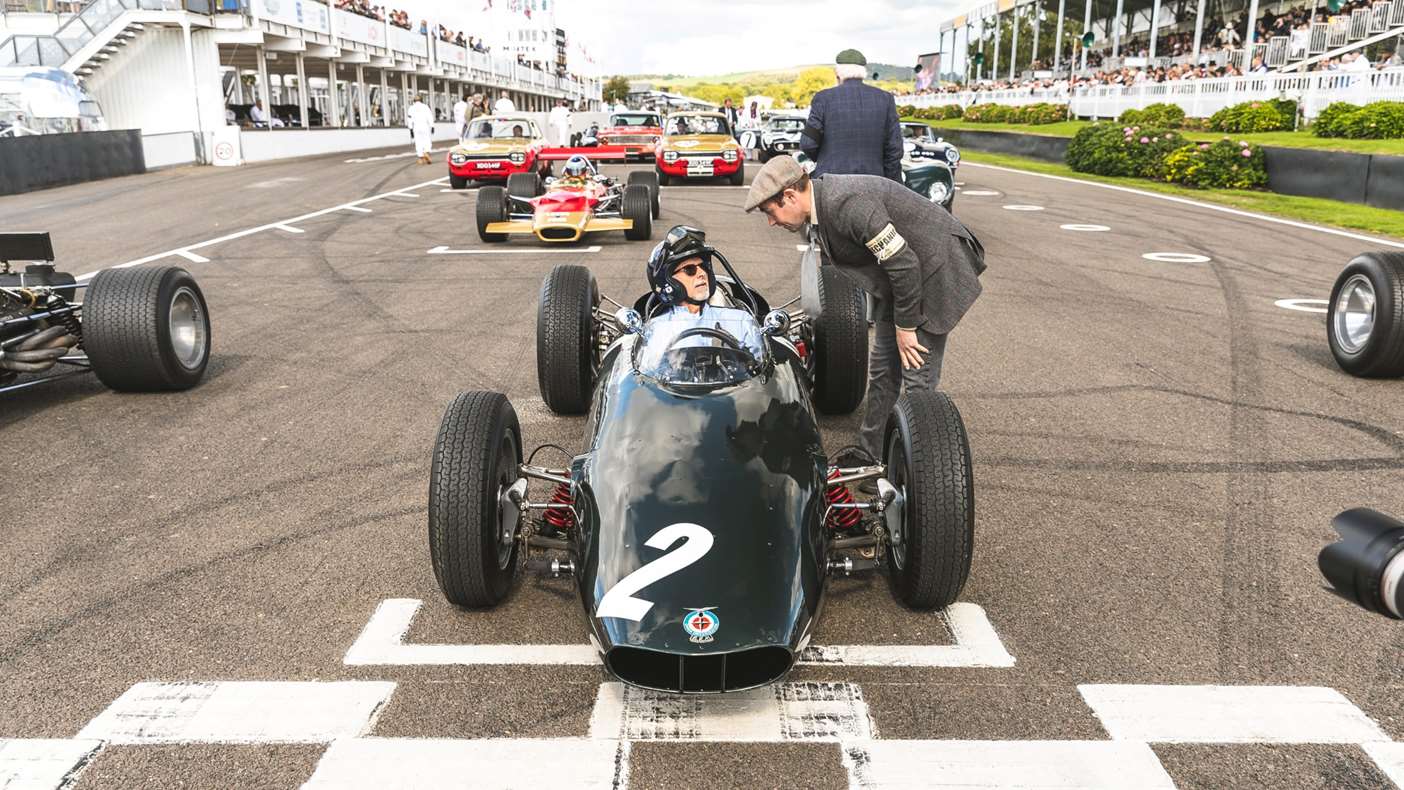
More than 30 of Graham Hill’s racing cars filed onto the motor circuit on each day of the Revival to honour the 60th anniversary of the Englishman’s first F1 World Championship in 1962. The poignant parade was led by Graham’s son and fellow World Champion, Damon Hill, who paid tribute to his father on the weekend of his 62nd birthday by driving ‘Old Faithful’ – the title-winning BRM P578.

Graham Hill was also saluted by his former teammate and rival Sir Jackie Stewart, who re-familiarised himself with a 1966 BRM P83 as part of the spectacle, as well as Graham’s grandson Josh and legendary F1 designer Adrian Newey, who each drove a Lotus 49 and 49B respectively.
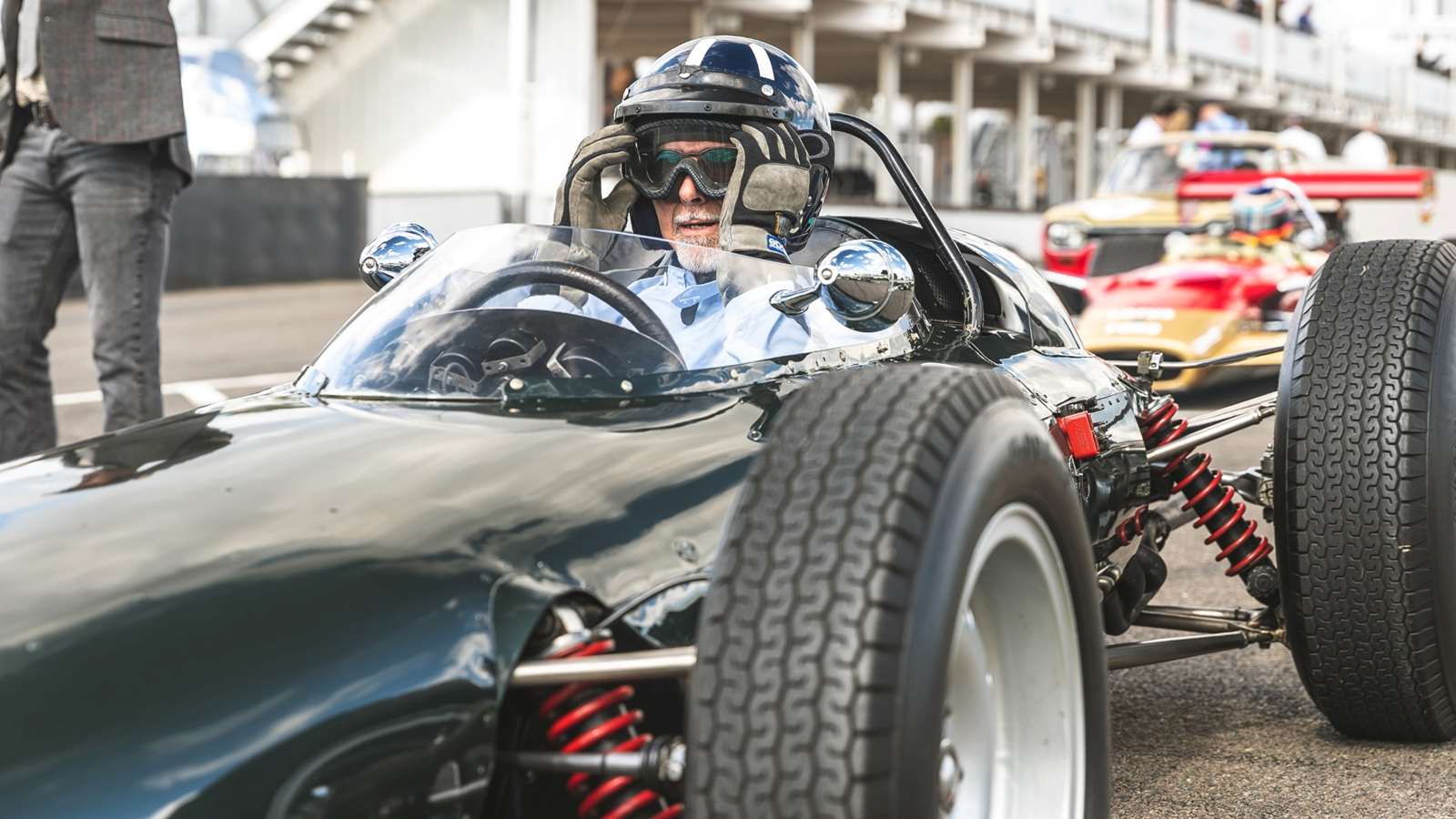
The sheer breadth and variety of Graham’s former cars involved in the parade was impressive, and spoke volumes about the talent of the only man in history to have won motor sport’s elusive Triple Crown.
SETTRINGTON CUP
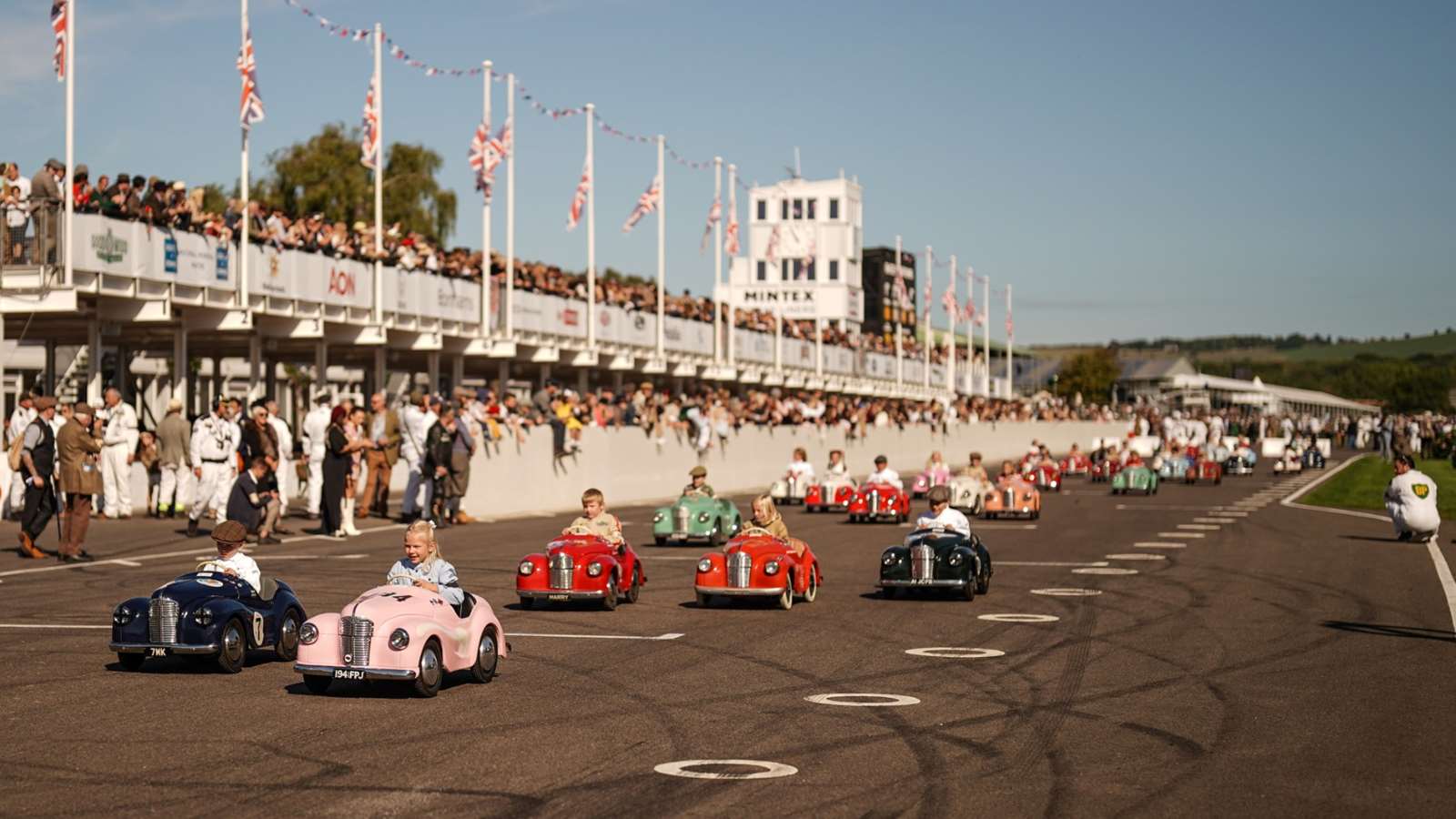
For an event that’s renowned for the smell of Castrol R and the din of race-tuned engines, it’s ironic that one of the most popular and hotly contested races of the weekend is decided by pedal power.
That race, of course, is the Settrington Cup for Austin J40 pedal cars, which is open to children aged 11 and under. This year’s Settrington Cup races were particularly special as Goodwood marked the tenth year of the contest.
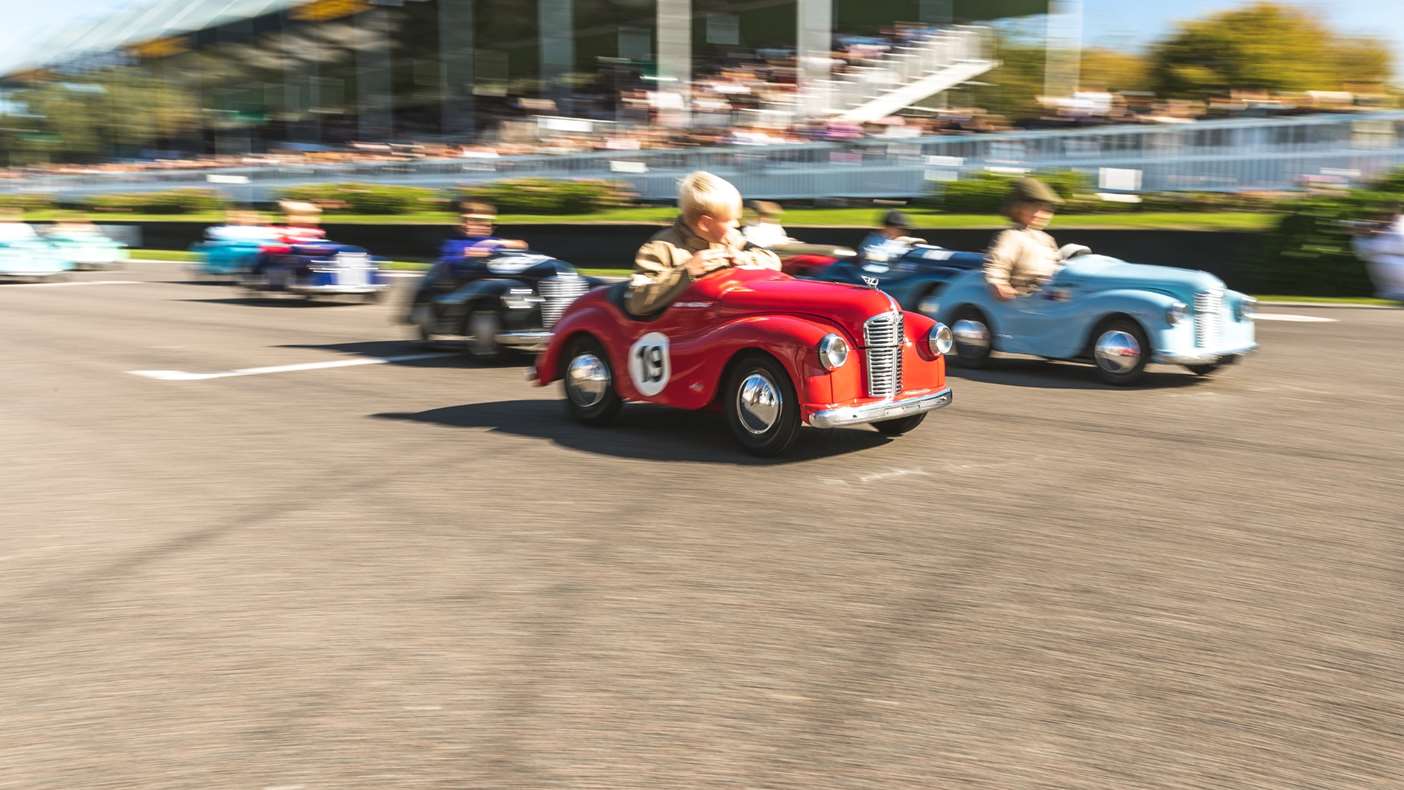
The organisers devised a race flag competition to mark the occasion, in which children could design the starting flag for a chance to compete in the Duke of Richmond’s very own Austin J40. It was nine-year-old Beth Miller who was awarded the drive, after her design was chosen by 2009 Formula 1 World Champion Jenson Button.
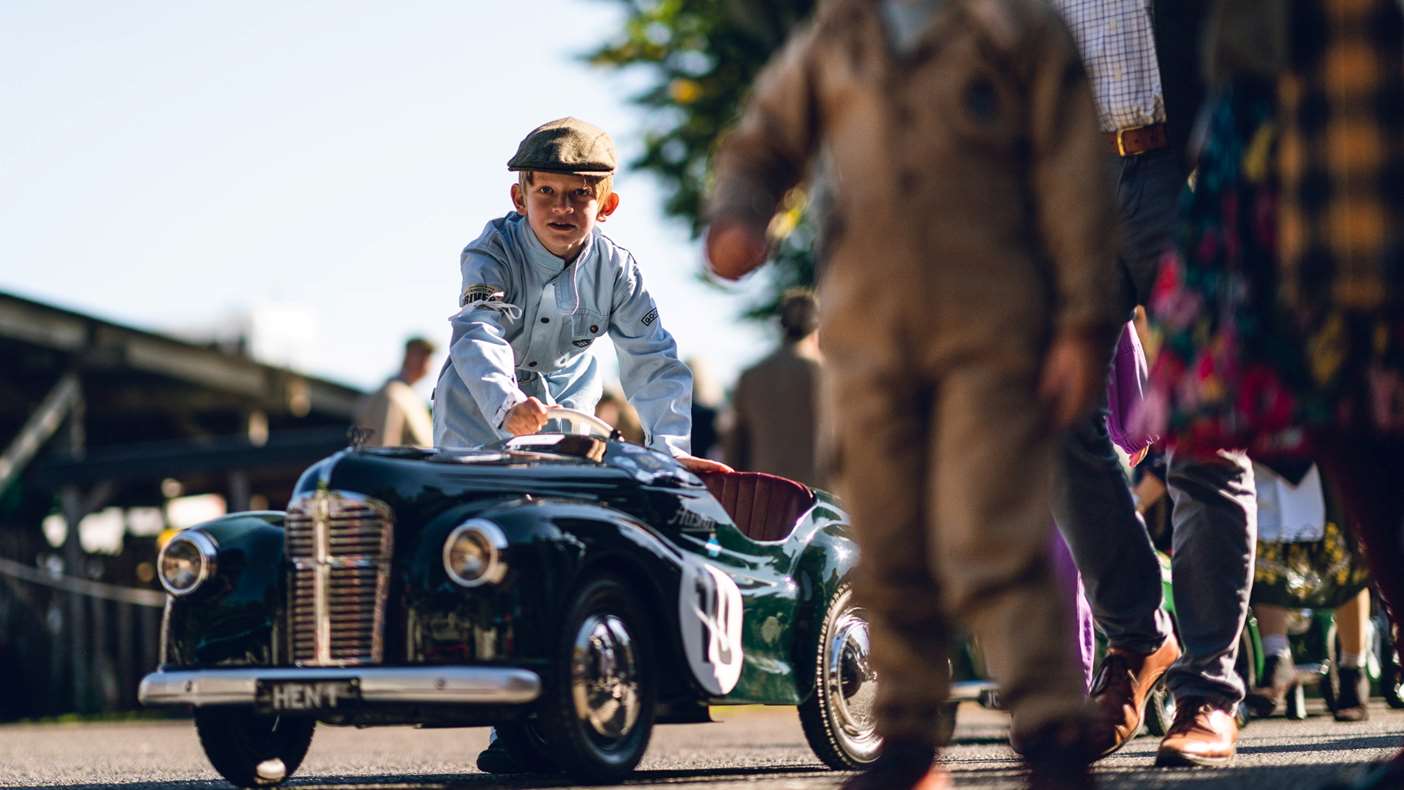
Part One of the Settrington Cup was won by the number 36 car of Alex Roach, who pulled out a big lead after deftly navigating the chicane following the traditional Le Mans start. Part Two was equally exciting as Esmé Graham sneaked past the number 60 car of Freddie Mann. She never looked back as she pedalled determinedly towards the finish line.
FREDDIE MARCH MEMORIAL TROPHY
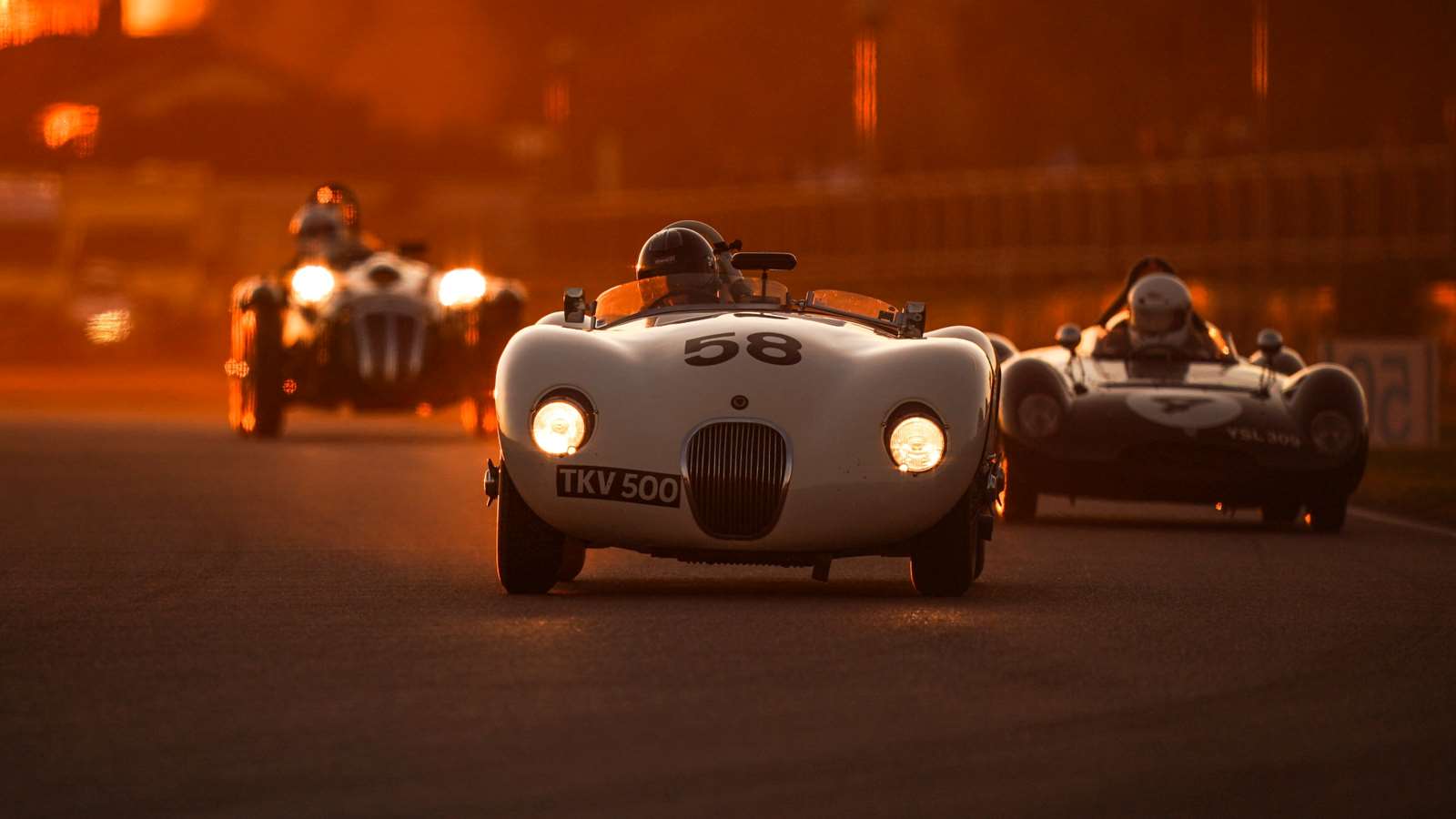
Opening the race card on Friday evening was the Freddie March Memorial Trophy, which harks back to the Nine-Hour endurance races held at the motor circuit in 1952, 1953 and 1955. Aston Martin’s DB3 and DB3S dominated the Nine-Hour races in-period, vanquishing the Jaguar C-types that proved so dominant at Le Mans. Exactly seven decades later, the British rivalry was renewed with the three DB3Ss doing battle against five Jaguar C-types.
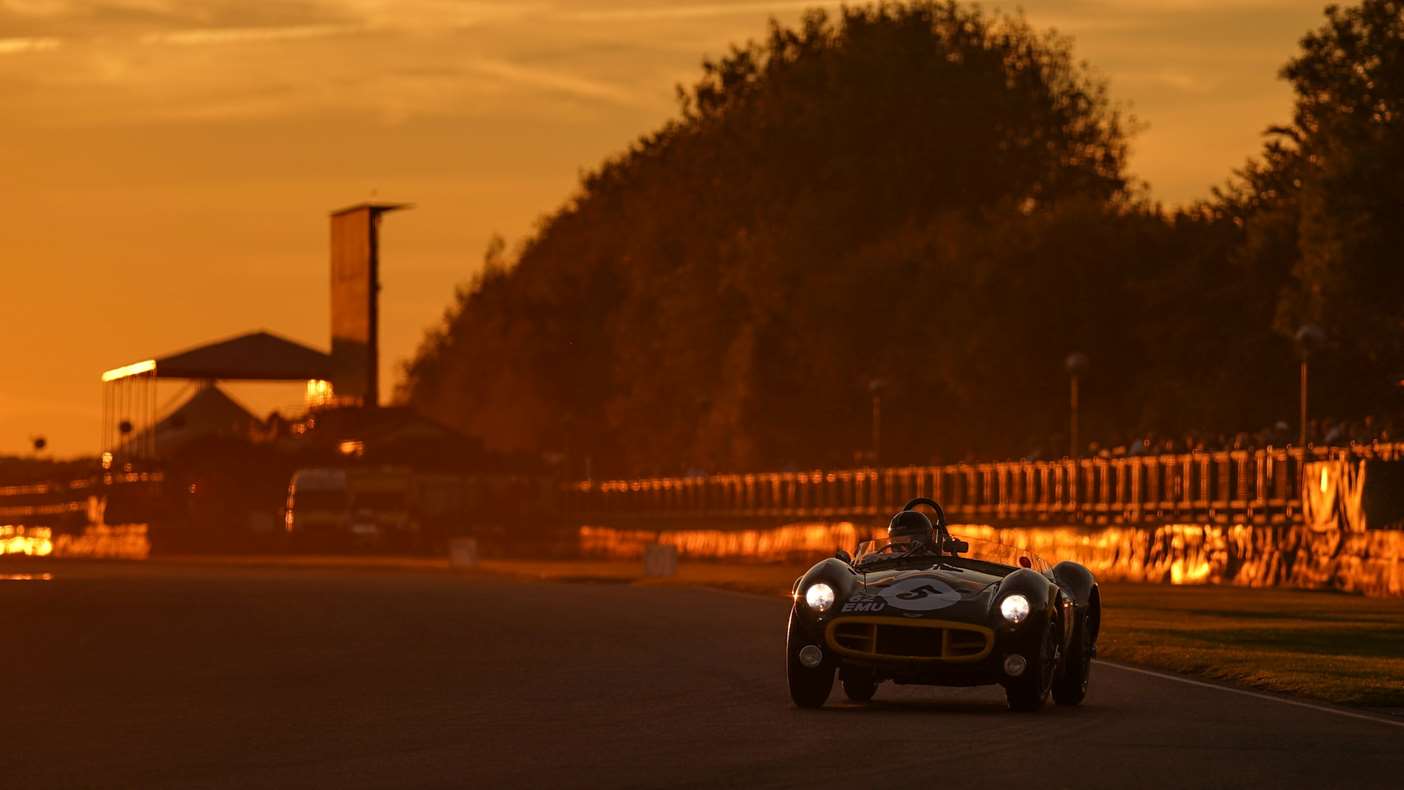
Jaguar came out on top with a one-two this time around, with victory going to the 1953 C-type of Sam Hancock and Fred Wakeman, ahead of the 1952 C-type of Nigel Webb and John Young. The rostrum was rounded out by the Allard J2X of Mike Grant-Peterkin and three-time Le Mans winner Benoit Treluyer. The highest-placed Aston Martin came home in sixth after a solid effort by drivers Wolfgang Friedrichs and Simon Hadfield.
RAC TT CELEBRATION
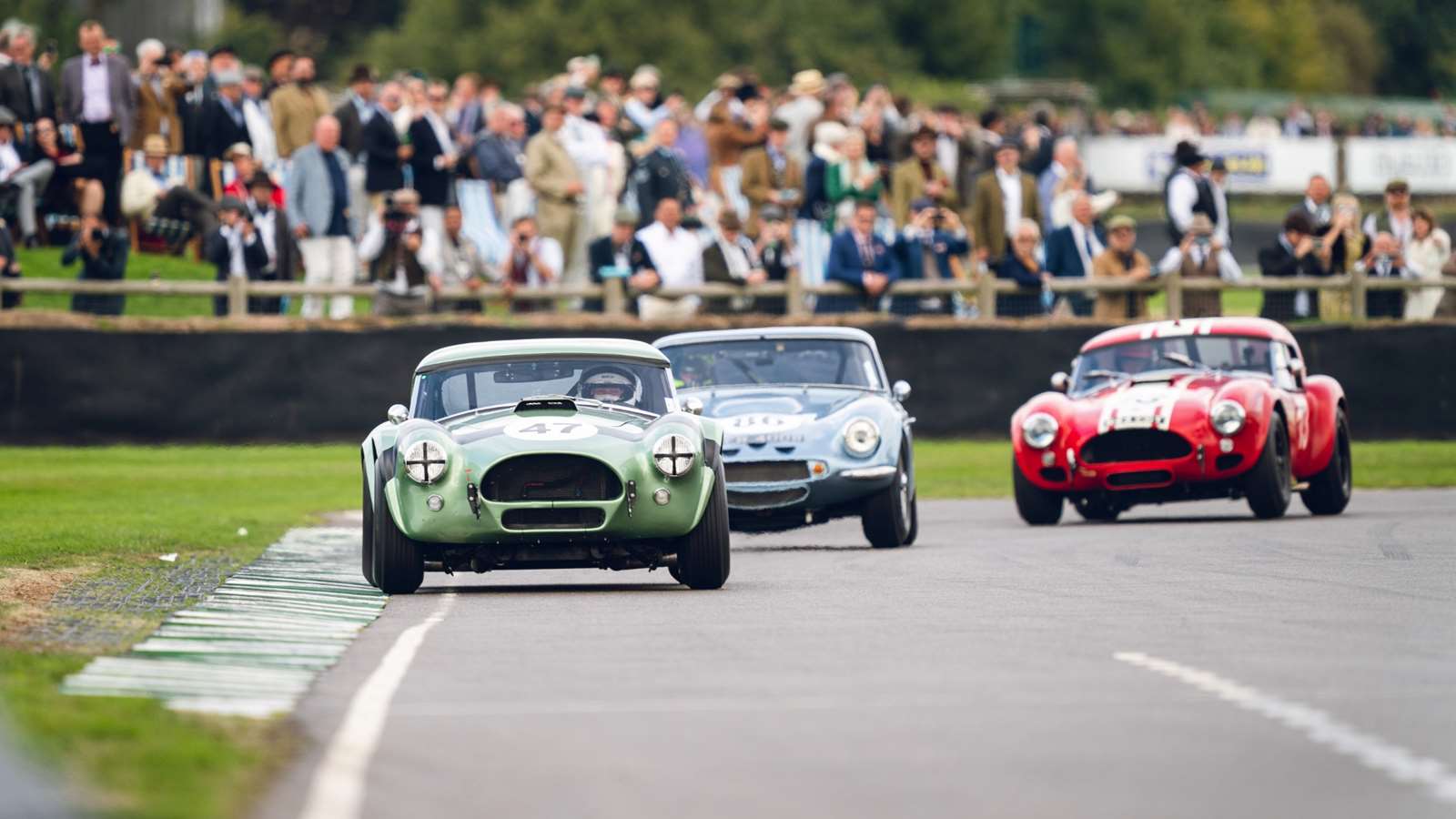
The one-hour, two-driver RAC TT Celebration is the Revival’s flagship event of the weekend, boasting illustrious grids of world-famous drivers doing battle in the finest GT racers of the 1960s. The race pays homage to the Tourist Trophy events held at Goodwood during the late 1950s to early ‘60s, in which Sir Stirling Moss and Graham Hill each took multiple victories.
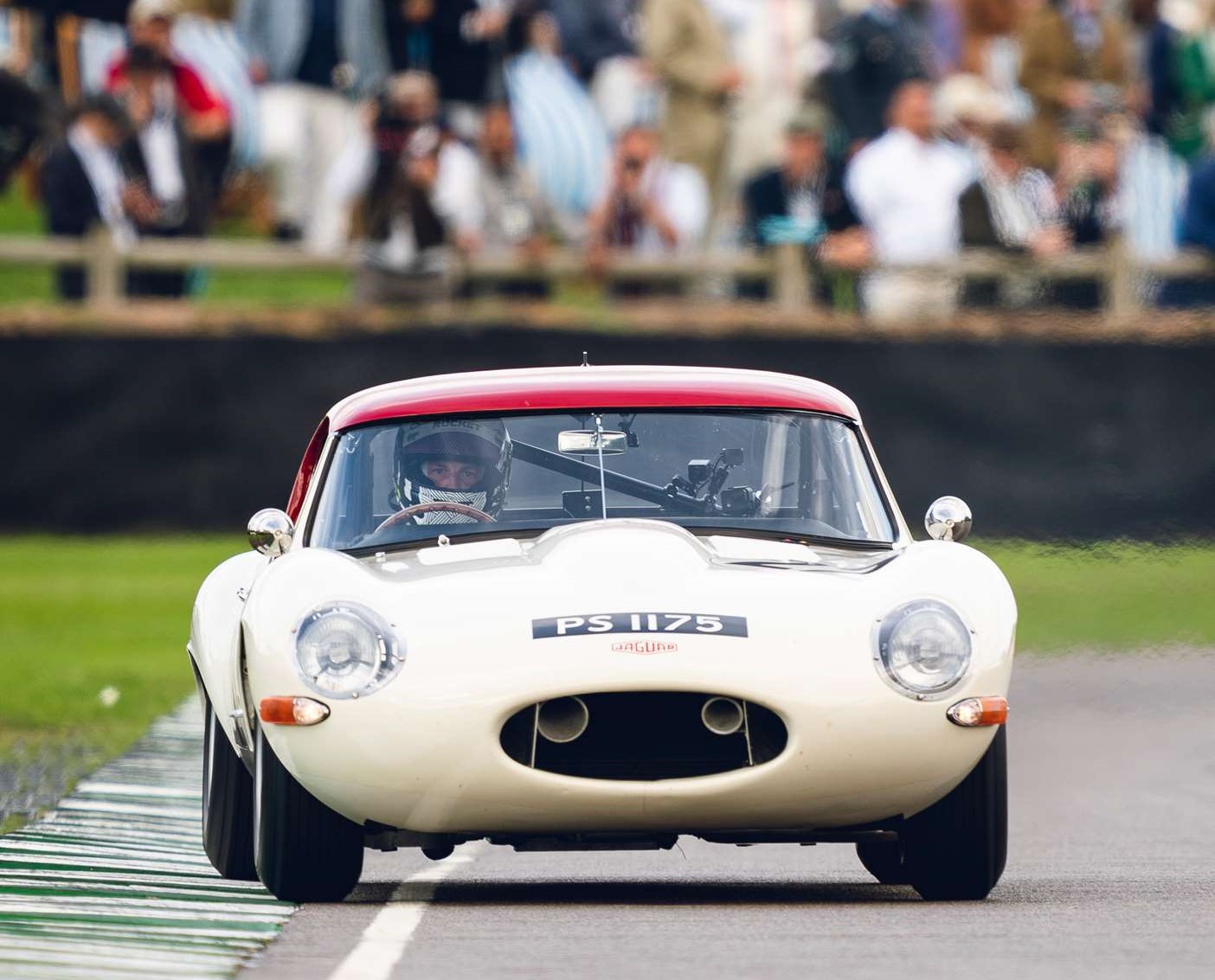
F1 World Champion Jenson Button lived up to his reputation as one of the highest-profile names on the grid by taking the lead from the front row in the Jaguar E-type Lightweight he was sharing with Harrison Newey, son of Red Bull F1 designer Adrian Newey.
Button looked set to achieve his first victory on British soil in over 20 years after building a commanding 13-second lead over Guy Smith in the TVR Griffith 400. Heartbreak ensued one lap after Button handed the car over to teammate Harrison, who retired the car with a broken gearbox.
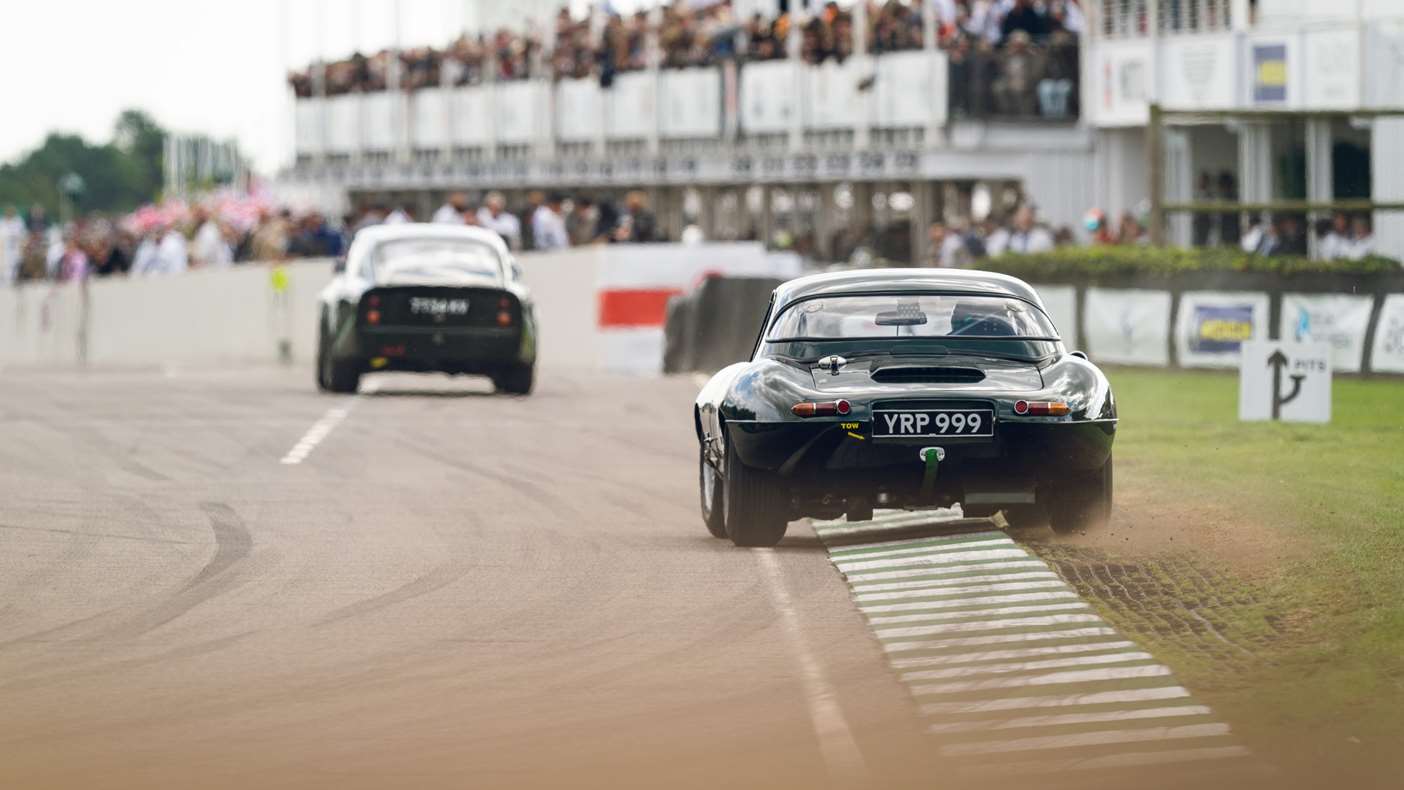
Guy Smith’s teammate Mike Whitaker then buried the second-place TVR into the barriers, allowing the chasing pack of Shelby Cobras to engage in a fierce battle for victory. The Cobra driven by touring car legend Gordon Shedden and fellow Scot Andrew Smith eventually took the chequered flag, following Romain Dumas’ retirement from the lead in the dying minutes.
The Lister-Jaguar of Fred Wakeman and nine-time Le Mans winner Tom Kristensen finished in second after a late spin, with the Jaguar E-type of Richard Meins and Rob Huff completing the podium.
BARRY SHEENE MEMORIAL TROPHY
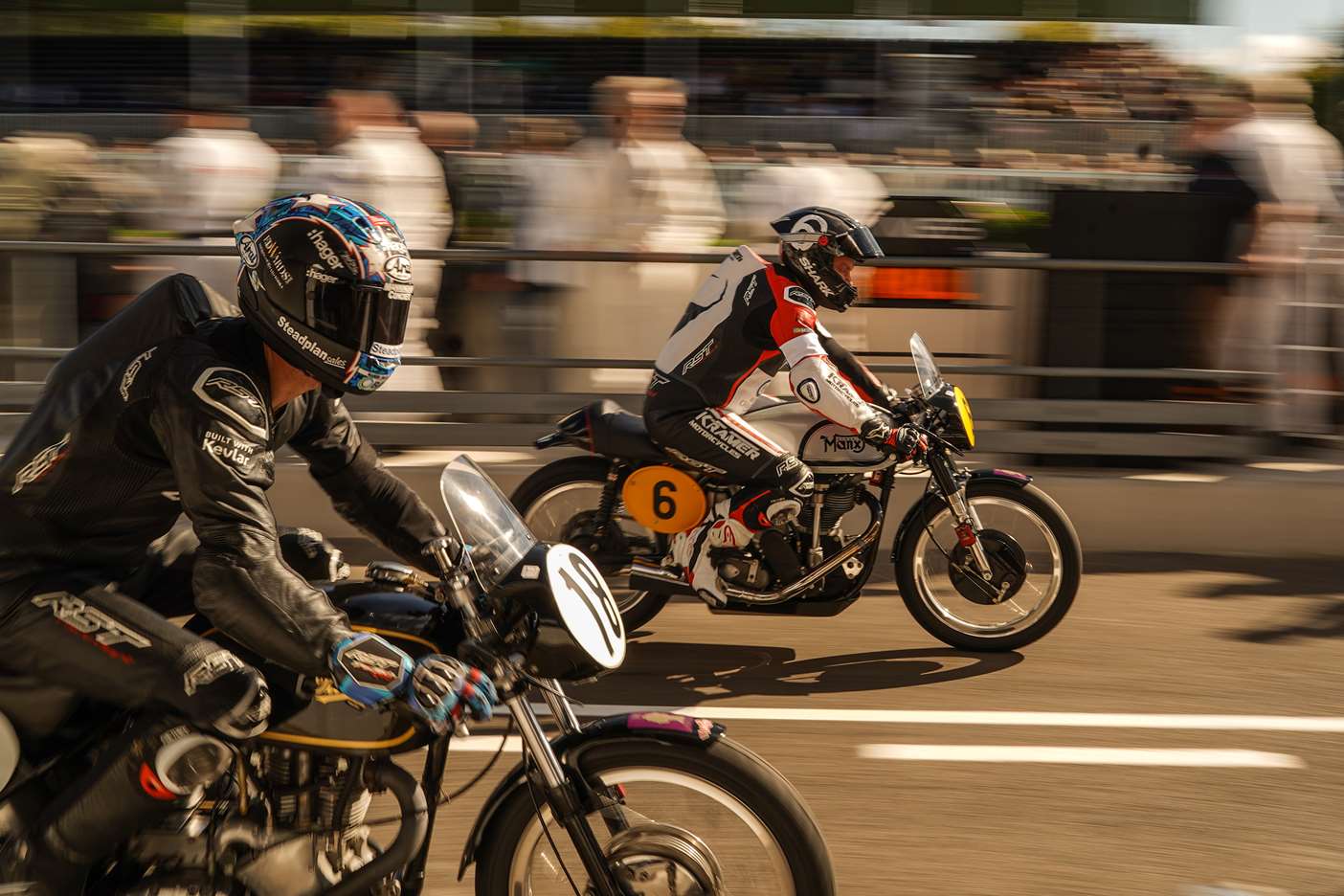
It’s undeniable that the riders in the Barry Sheene Memorial Trophy are some of the most daring competitors of the weekend, pushing their 1950s motorcycles to the limit of adhesion around such a fast and punishing circuit.
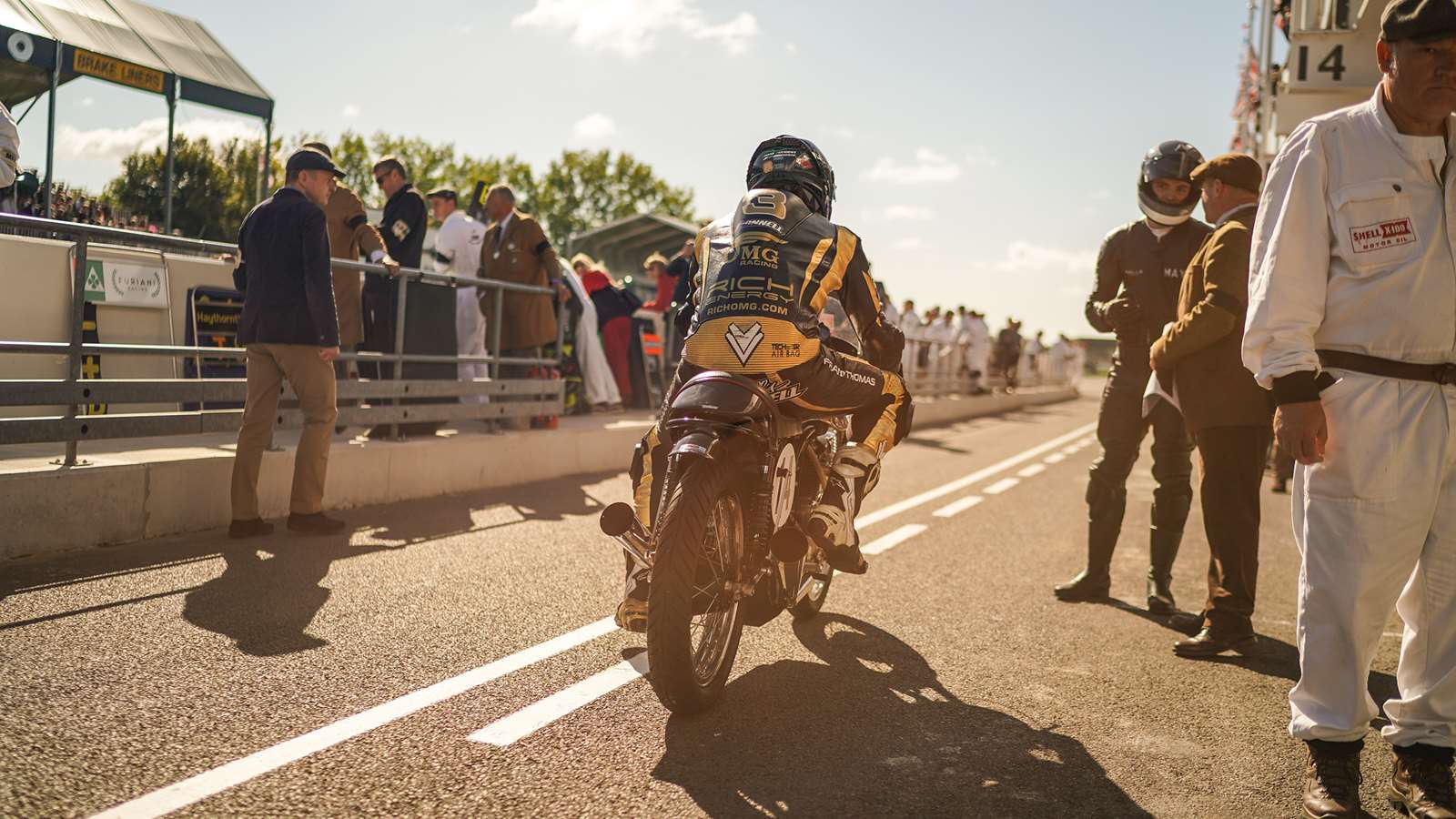
The Matchless G80 CS ridden by the George Thomas and James Hillier pairing dominated Part 1, taking an imperious victory ahead of Josh Brookes and Ben Kingham’s Vincent Black Shadow with Micheal Russell and Michael Rutter’s Velocette MSS finishing in third.
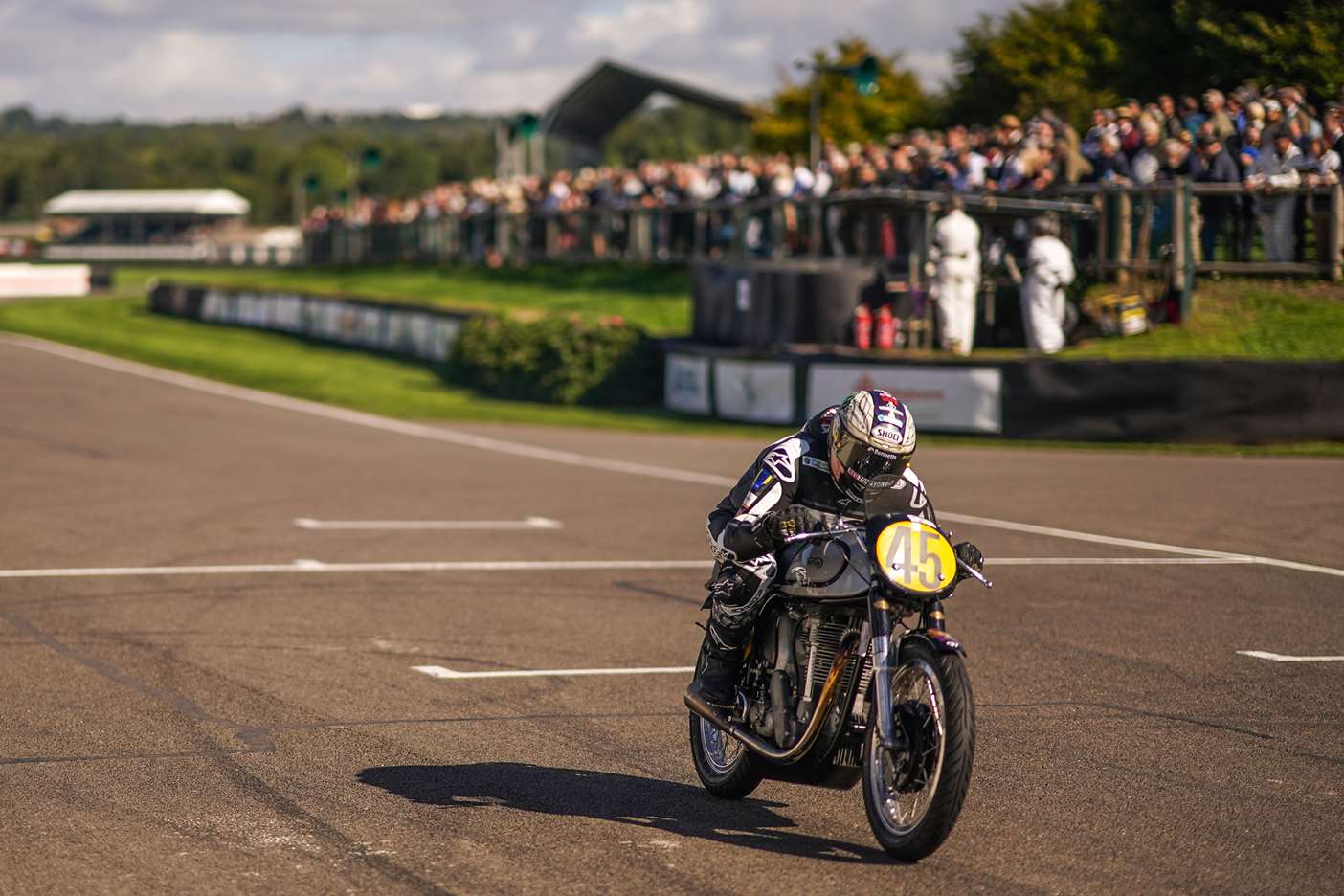
Part 2 delivered the most exciting race of the series, with the leading three bikes of Thomas/Hillier, Brooks/Kingham and Russell/Rutter engaged in a three-way scrap that went right down to the wire. Josh Brookes was beset by a slew of backmarkers while under immense pressure from Hillier on the final lap, but the Australian kept his cool and emerged from the chicane narrowly ahead of the ever-present number 17 bike of Hillier.
ST MARY’S TROPHY PART 1
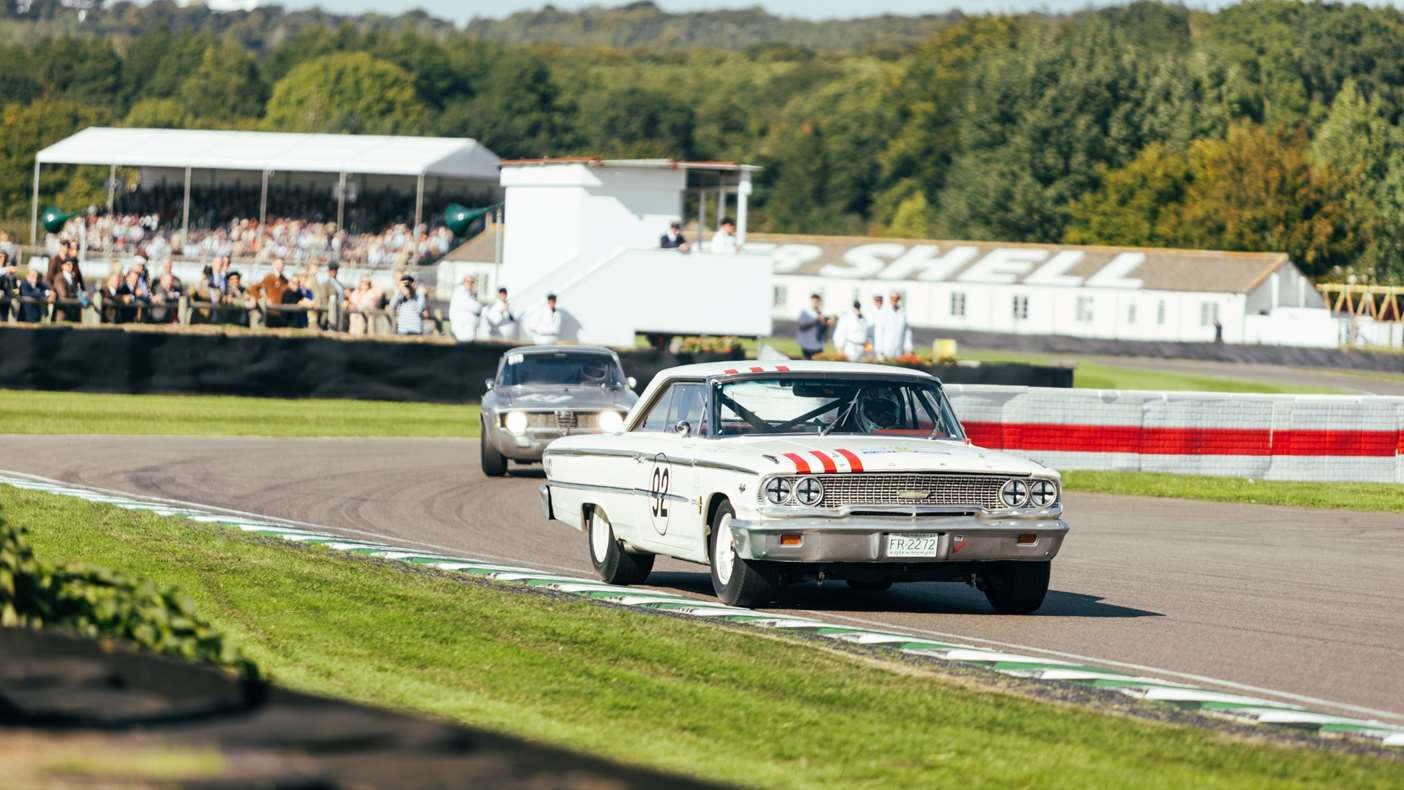
The St Mary’s Trophy for 1960-1964 saloons is one of the most famous Revival races, staging exciting battles between the goliath V8-powered Ford Galaxies and effervescent Mini Coopers. The debut of NASCAR legend Jimmie Johnson was a headline addition to this year’s grid, with the American competing against eight Le Mans winners including Tom Kristensen and a host of former Formula 1 drivers such as Max Chilton and Jean-Eric Vergne.
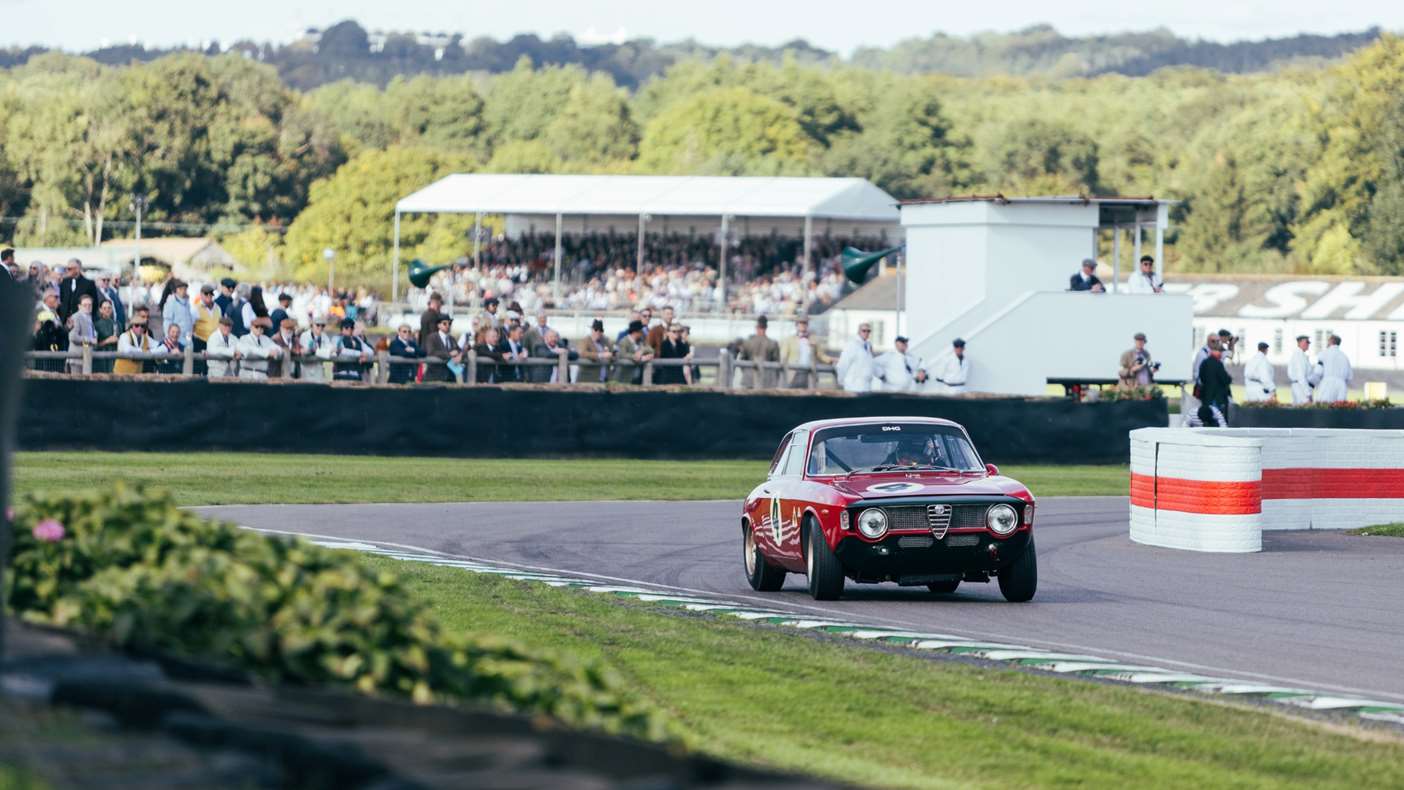
Romain Dumas put the shove of his Ford Galaxie’s V8 to good use, and started from pole in Part 1 of the St Mary’s Trophy on Saturday afternoon. He led the chasing pack headed by the Lotus Cortinas of Andrew Jordan and WRC driver Craig Breen.
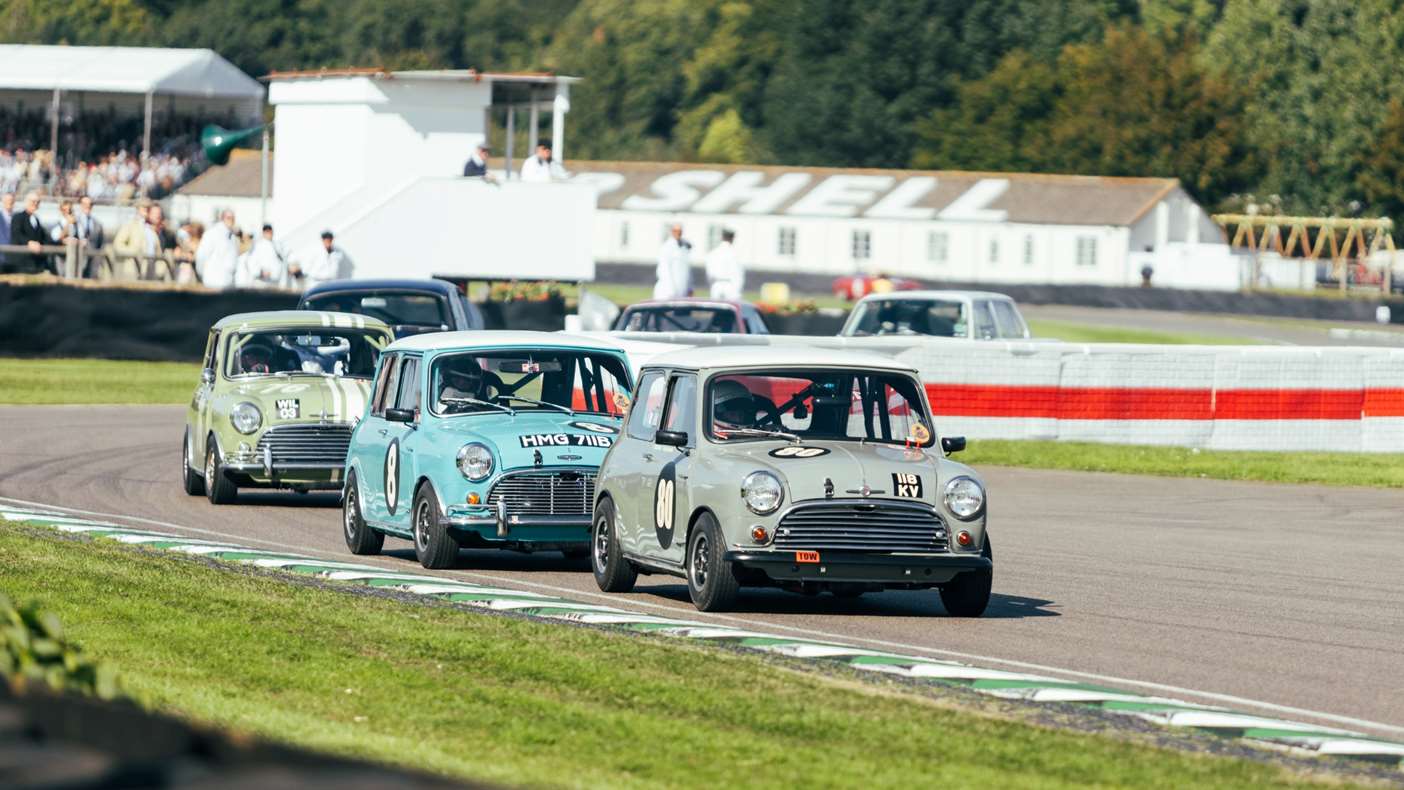
The Cortinas were dispatched by the Alfa Romeo Giulia Sprint GTA driven by Frank Stippler following some heated battling, and the German was climbing all over the back of Dumas’ leading Galaxie when the chequered flag came out on the final lap. The highlight of the race for many, however, was the intense scrap between the Minis of André Lotterer and Alex Brundle further down the pack. The pair traded positions corner after corner, with Lotterer narrowly defeating Brundle by the end of the 25-minute race.
LAVANT CUP
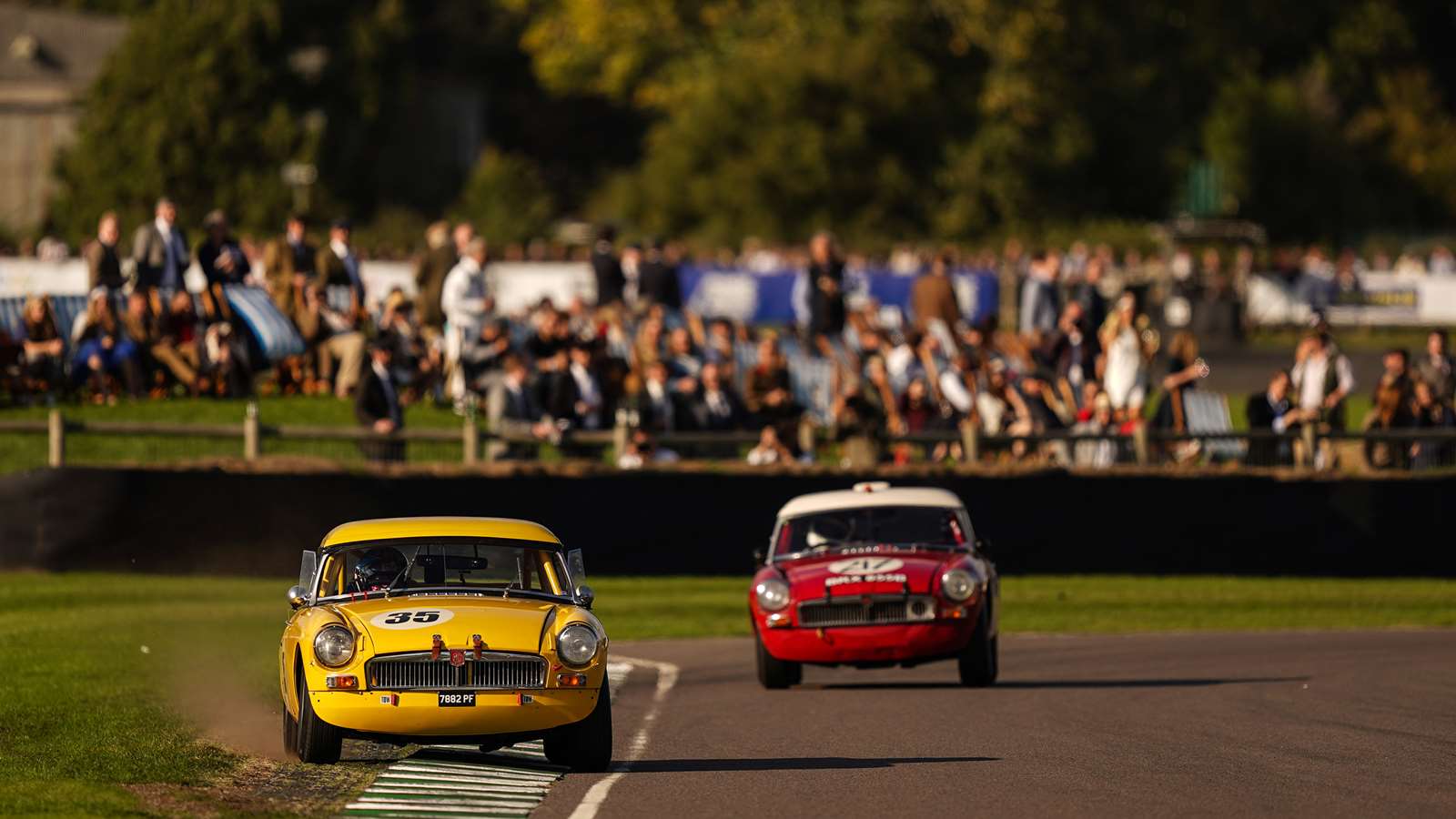
A new addition to the Revival for pre-1966 MGBs, the Lavant Cup was arguably the most dramatic race of the entire weekend.
Former World Touring Car Champion Rob Huff started his motor sport career behind the wheel of his father’s MGB, and was predictably tipped as favourite for the race win. It was not to be, however, as a multi-car collision at the start brought out the red flag and Huff’s car retired shortly thereafter with engine issues.
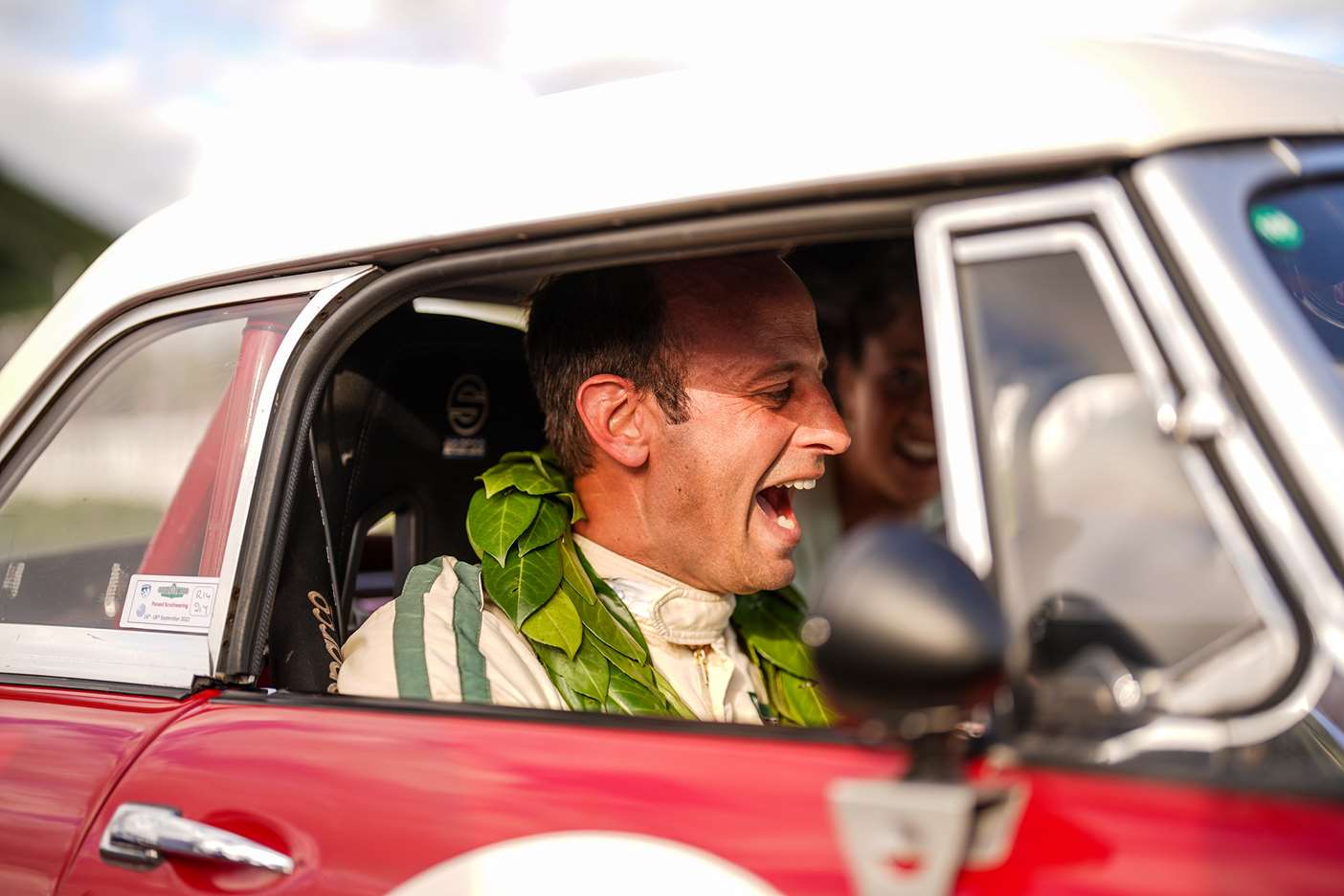
The bright-yellow number 35 car of Mark Cole emerged as the new leader once the race got back underway, chased by Ed Foster in the red number 217 entry. Mark Cole then dramatically retired from the race with mechanical issues of his own, handing an unexpected victory to the elated Foster.
SIR STRILING MOSS MEMORIAL TROPHY
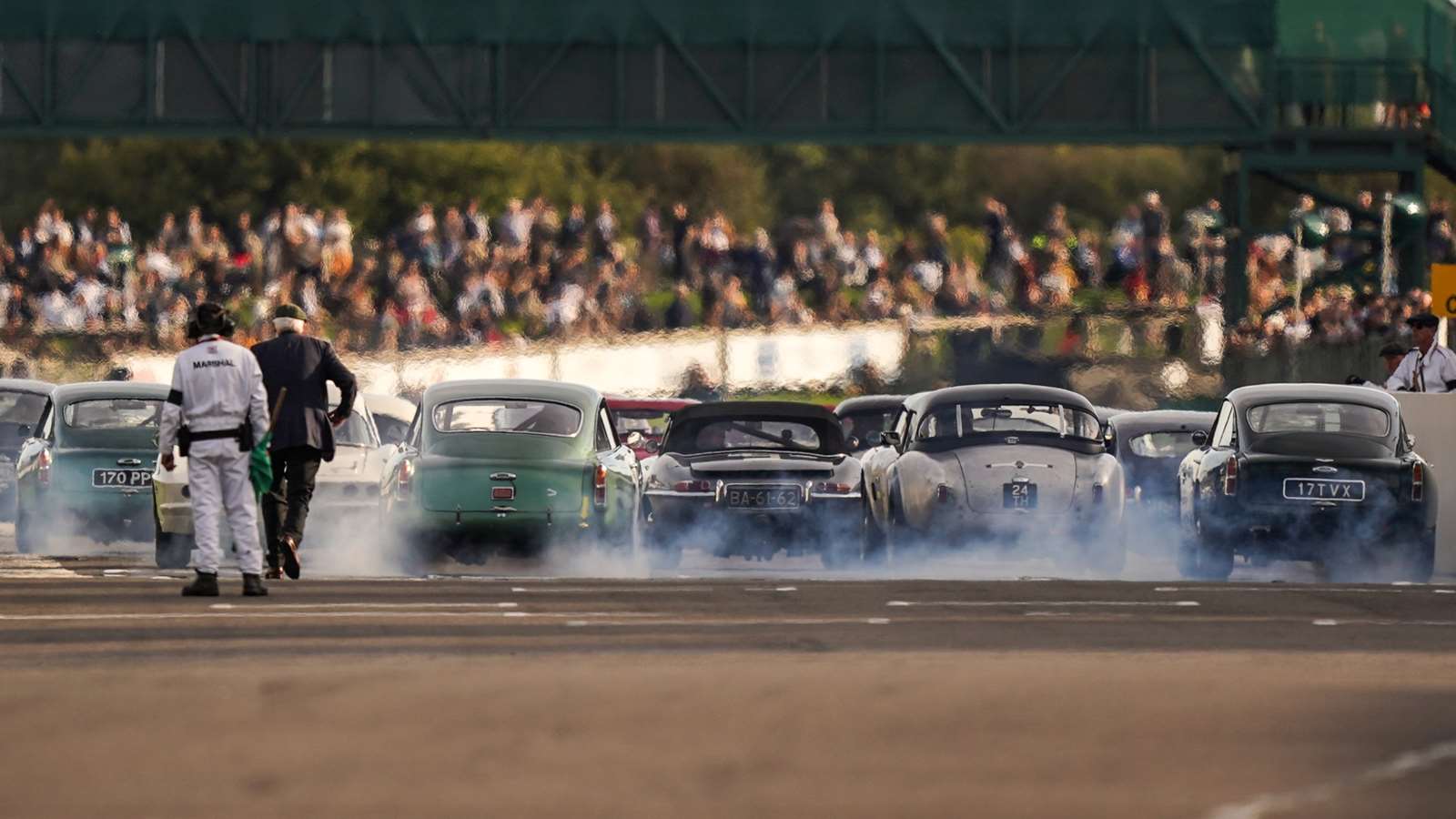
Taking place under the red hue of Saturday evening’s sunset, the contest formerly known as the Kinrara Trophy is often nicknamed “the most expensive race in the world”, featuting grids totalling a combined value of nearly a quarter of a billion dollars in years past.
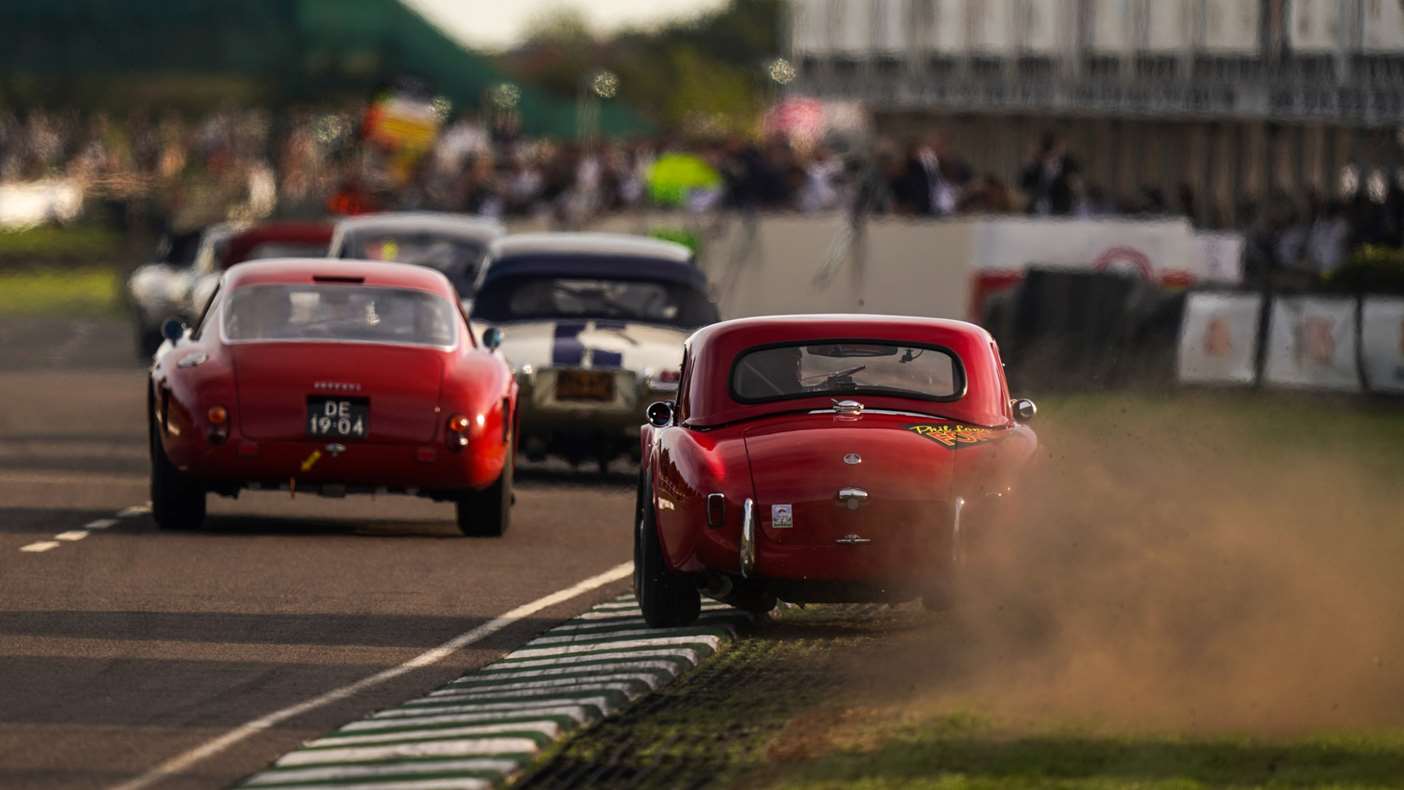
The eye-watering value of the cars is perhaps matched only by their beauty and elegance; this year’s grid included nine Jaguar E-types, four Aston Martin DB4GTs, four AC Cobras and six Ferrari 250GTs. The race also contained one of the weekend’s most competitive entry lists, featuring IndyCar legend and Revival debutant Scott Dixon, Formula 1 World Champion Jenson Button and three-time Indy 500 winner Dario Franchitti.
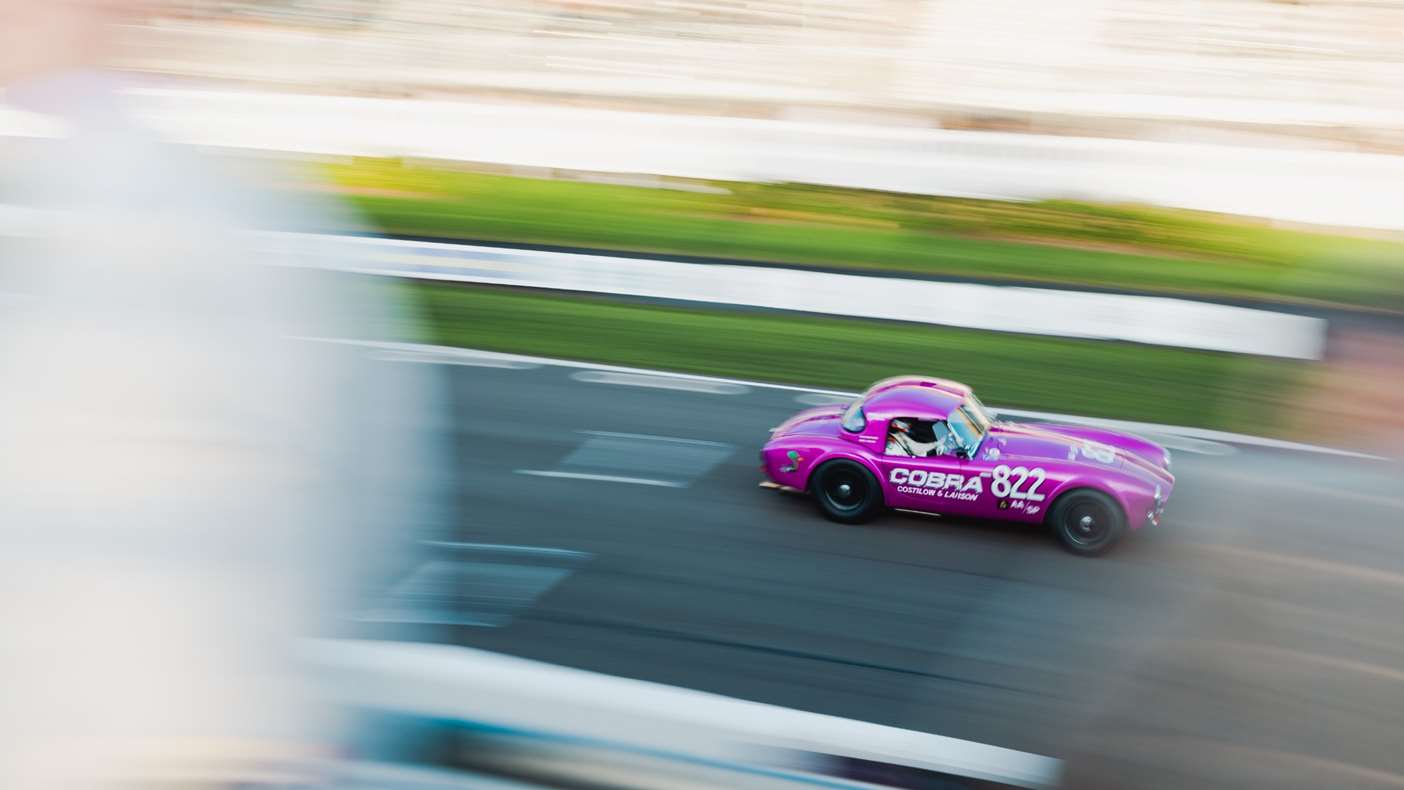
Nicky Pastorelli took the early lead in his Ferrari 250GT SWB when the race got underway, followed by Mike Whitaker’s AC Cobra Dragonsnake. The appearance of the safety car then shuffled the order, benefiting the Ferrari 250GT SWB driven by the father-and-son duo of David and Oliver Hart.

Oliver’s Ferrari was relegated to second place as the race neared its conclusion by BTCC ace Andrew Jordan, who took the win after substituting for Mike Whitaker in the Cobra. The Ferrari 250GT SWB of Vincent Gaye and Joe Twyman bagged third position, while the illustrious combination of Dixon and Franchitti brought their E-type home in sixth.
For Goodwood Revival video highlights, click here.
Sign up for 2023 Goodwood Revival ticket alerts here. Dates will be announced in due course.
